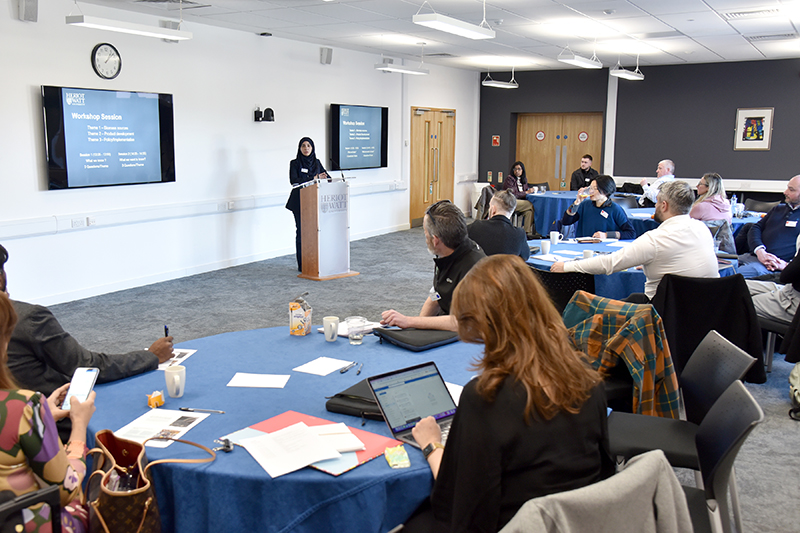
CALA and CCG were among the major names in attendance at the launch event of Heriot-Watt University’s two-year study into the potential use of biochar as a building material to boost sustainable construction goals.
Biochar is a charcoal-like substance typically used as a soil enhancer. It is produced by heating organic biomass from food, paper, agricultural, and forestry waste in the presence of little or no oxygen – with the process known as pyrolysis.
Small-scale studies have seen biochar used as an additive in concrete, bricks, plaster, and insulation, with it proving to provide excellent insulation and the ability to regulate humidity thanks to its water absorption qualities.
Crucially, biochar is also carbon negative. It locks in carbon from the organic materials that would have otherwise decomposed and emitted into the atmosphere.
Despite its potential, no data exists on biochar performance within an actual building. Heriot-Watt University is now spearheading an interdisciplinary study, funded by UK Research and Innovation (UKRI), which will delve into the performance and safety credentials of the material in simulated built settings.
The launch event featured a series of presentations by academics, Scottish Forestry, Berlin-headquartered building materials supplier ecoLocked, Freiburg-based digital infrastructure for durable carbon removal specialist Carbonfuture and local biochar producer Sustainable Thinking Scotland.
Leading Scottish Forestry’s presentation was Dr William Clark, transport and innovation advisor at the organisation, who also forms part of the project’s steering committee.
“It’s things like this that I see as the vehicle to really solving the climate emergency,” he told Project Scotland. “We still have questions – my presentation was a kind of ‘help me to help you’. I need the biochar community to help me understand where to place them in our value chain, what their value point is for biochar, what we can start to change or replace in our chains.”

After the morning presentations, the event broke up into workshops where a series of questions were posed to attendees to debate alongside members of the project team. Talking points included the need for long-term evidence of biochar’s use as a building material and the potential for biochar carbon credits being an incentive to adopt the material.
Cala’s sustainability advisor Oliver Cooney told Project Scotland that the eventual outcome of the discussions could lead to the creation of an innovation that helps reduce embodied carbon and contributes to sustainability goals.
“Cala was invited to take part in Heriot-Watt’s project as a potential end user of biochar, to find out more about the material, and consult on how it might be used in construction,” he continued. “Our perspective is on the viability and practicalities of how it could be used in the future, taking embodied carbon reduction, safety, regulation, cost and time into consideration.
“Sustainability is obviously a major focus at Cala, and like everyone else, it’s a journey for us as a business. We certainly can’t do it alone, so we try to partner with universities, the wider supply chain, policymakers and other stakeholders wherever possible to collaborate on innovation. Universities are a key part of this, as they are often the point where ideas meet research – we’re able to help bring the theory to life by looking at how it might be put into practice.
“Eventually, the outcome of these discussions could be that we have a viable biochar product that can be used in the construction of our homes that helps us reduce embodied carbon and contributes to our overall sustainability goals.”
Input from industry is key to the project, with project lead Dr Mehreen Gul previously telling Project Scotland that the work will not move from one stage to the next without considering the thoughts of those within the construction supply chain, material manufacturers, developers, and suppliers.
“We need the construction sector’s input when we do the first phase of biochar characterisation, because that’s where we need to get their stamp of approval or some kind of confidence to say this is the right material,” she explained.
“If they’re not buying into the concrete that we recommend, then it’s not going to work and to be able to do that we need to have their views before and after.”
Dr Gul and the project team are now analysing all of the input provided at the event, with key pieces of information to be refined and built upon for the next phase of work. Building modelling is also due to start soon, with the University of Birmingham and Aston University currently recruiting research associates as part of their work on the project.
“A lot of work is ongoing,” Dr Gul concluded, before revealing that a follow-up event can be expected in the near future.










